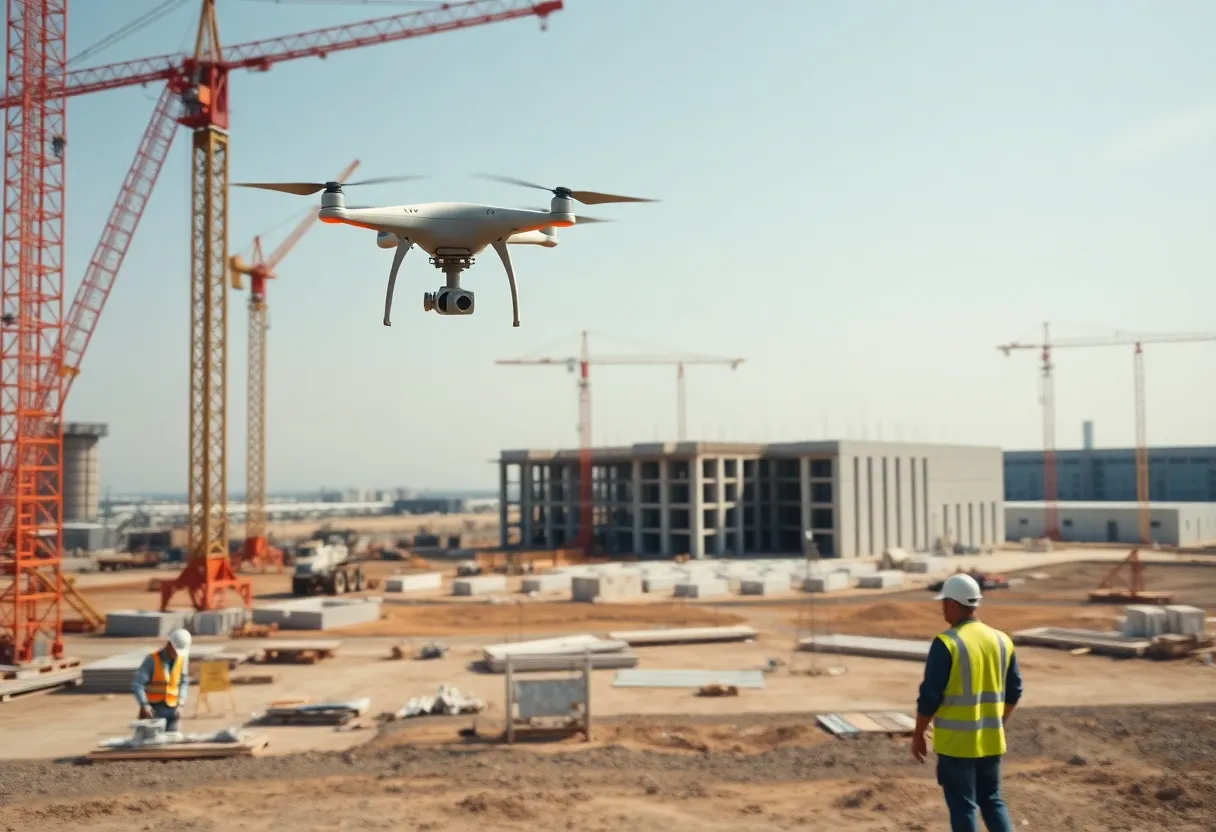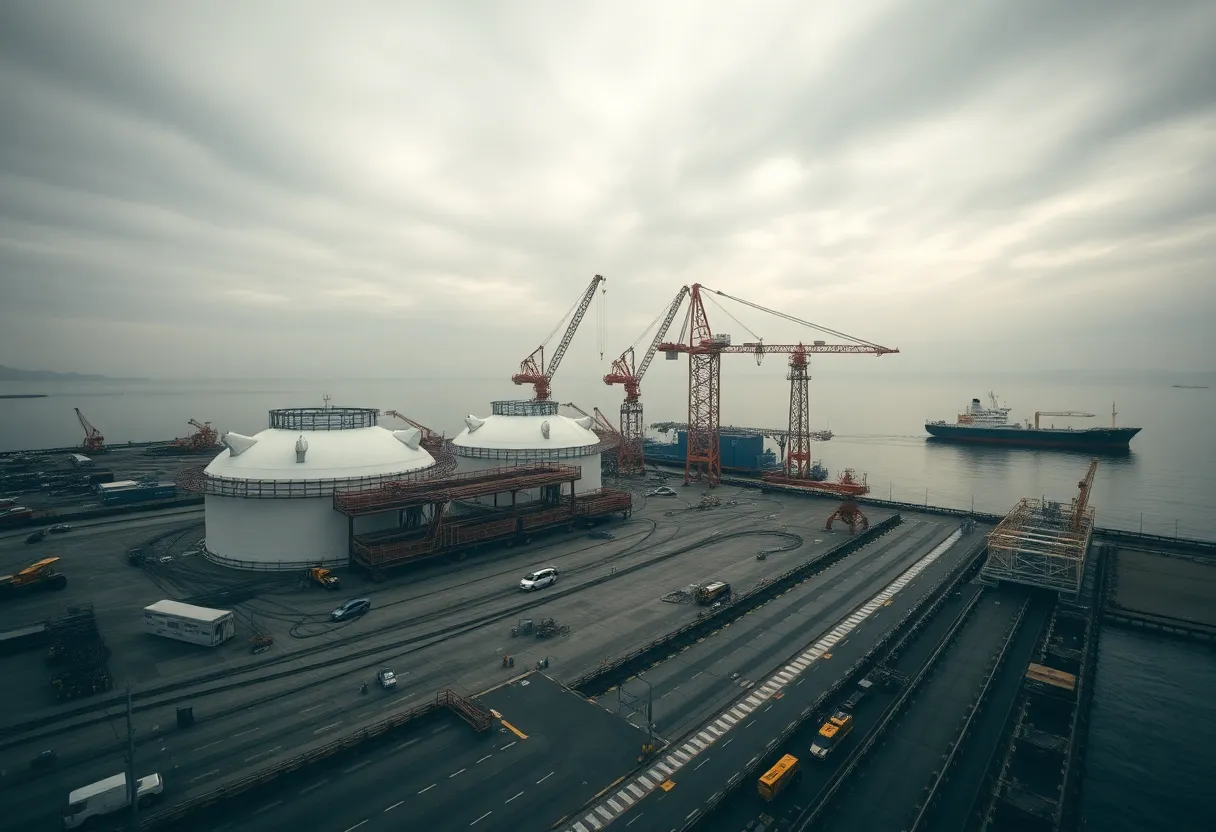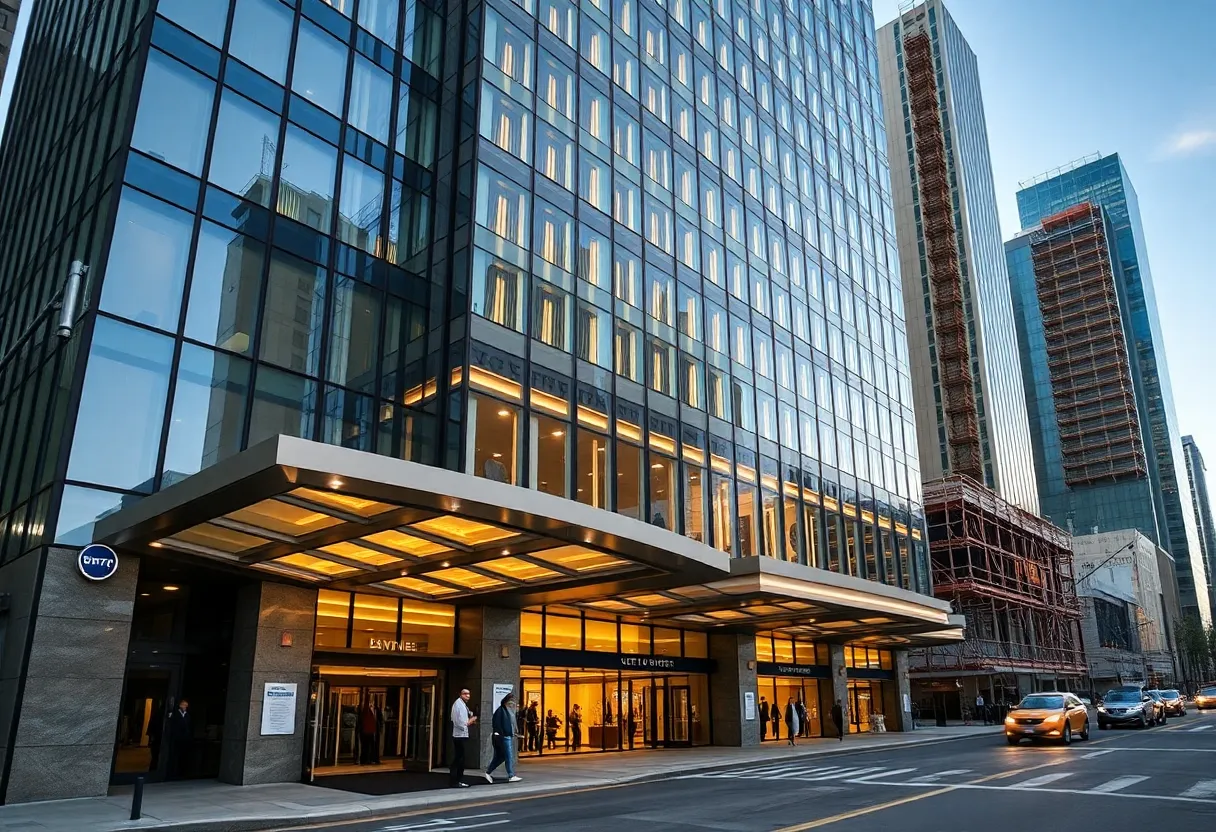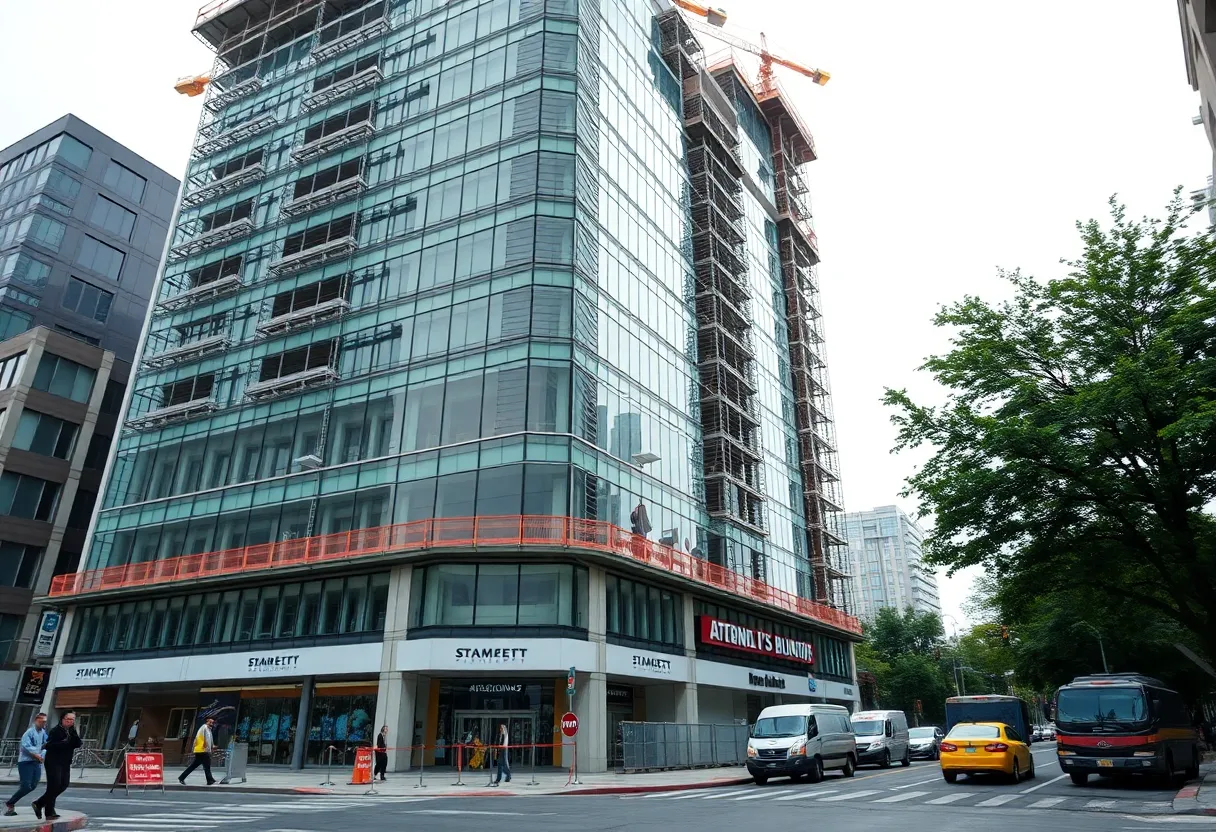Boise, Idaho, September 6, 2025
News Summary
The construction sector is moving from pilots to routine use of advanced tools as drones, large-scale 3D printing and data‑center builds reshape jobsites. Drones and AI deliver georeferenced models, thermal inspections and automated volumetrics for progress tracking and safety. Gantry and robotic 3D printers cut stages, reduce waste and speed low‑rise and repeatable projects. Meanwhile, resilient data center construction demands tighter sequencing, redundant utilities and specialized MEP work. A major $15 billion semiconductor expansion in Boise, Idaho exemplifies how industrial-scale projects accelerate demand for technology, skilled crews and integrated site infrastructure.
Construction Industry Accelerates with Drones, 3D Printing and Data-Center Methods
Boise, Idaho — September 5, 2025
Data compiled by Ocere Ltd. shows the construction sector is rapidly absorbing new technologies to boost efficiency, cut costs, and meet tight schedules. Drones and AI, once experimental, are now central to daily operations on job sites around the world. As project complexity grows and timelines tighten, firms are testing and integrating advanced tools to stay on track and maintain compliance. Three transformative developments stand out: drone-enabled site monitoring, 3D printing for structural builds, and a strategic emphasis on data center construction.
In the field, drone technology serves multiple purposes. High-resolution imagery, precise mapping, and real-time visual intelligence are now routine components of project management. When paired with specialized software and platforms, drone data informs decisions from pre-construction through closeout. Aerial imagery also enhances marketing and stakeholder communication by providing clear, comprehensive views of active sites. Some companies combine drone footage with professional photography from online image banks to broaden reach and improve marketing outcomes. Drones document project progress from site clearance to structural topping-off, increasing transparency and confidence in delivery timelines.
Construction managers use unmanned aerial systems to track daily or weekly progress and compare actual on-site results with digital models to spot delays and critical issues early. Advanced drones and software can translate captured data into georeferenced site models for measurements, volume calculations, and distance checks. AI-powered drones are being used to conduct cut-and-fill analyses, monitor material stockpiles, and verify structural alignment, reducing the need for repeated site visits. This data stream also supports faster, more informed approvals in owner-architect-contractor meetings and helps manage risk by enabling remote inspection of facades, scaffolding, roofing, and deep excavations. Infrared-equipped drones further extend capabilities by identifying thermal anomalies in MEP systems and uncovering structural weaknesses not visible during a standard walkthrough. In high-risk zones such as tower cranes and demolition sites, real-time remote monitoring adds an additional level of safety. Drone footage is archived for internal audits, investigations, or regulatory compliance purposes and can be integrated with other models to evaluate underground utilities or overlay future work on existing infrastructure.
3D printing in construction is expanding as builders seek to reduce labor demands and accelerate production. The market for 3D construction printing was valued at about US$37 million in 2023, and its growth trajectory points to a future of roughly 100% annual expansion with projections surpassing US$20 billion by 2032. Adoption is accelerating especially for low-rise buildings and prefabricated components. Large-scale gantry systems or robotic arms extrude concrete or geopolymer materials directly from digital models to form walls, structural cores, and facade elements more cost-efficiently than traditional methods. 3D-printed structures can be fabricated in days and typically require fewer construction stages, reducing formwork, framing, and manual finishing. The approach enables complex shapes without extra tooling, and optimized printing software improves material flow to minimize waste, support just-in-time logistics, and streamline procurement. Beyond housing, 3D printing is being applied to schools, hospitals, and emergency shelters in regions facing labor shortages or disaster risk.
Data center construction is another highly active area in commercial build-out. Modern data centers are designed for uninterrupted uptime, concurrent maintainability, and fault tolerance. Resilience measures include diversified bandwidth through secure optical fiber and satellite connections, enhanced perimeter security, diesel generators for prolonged autonomous operation, and solar power to augment safety. Location decisions weigh fiber connectivity, energy availability, safety, and tax incentives. AI and cloud-service firms are driving demand for next-generation data-center facilities, with explicit examples of expansion activity across multiple regions. The sector’s growth is pushing builders to adopt new methods and standards to ensure reliability and efficiency.
State departments of transportation (DOTs) have become major drivers of drone use in public works. The most common DOT application remains road construction tasks such as widening, repair, and rerouting. Additional tasks include material volume and stockpile monitoring, bridge replacement and repair, and railroad track work. Programs vary by state: some DOTs consolidate drone operations under a central aviation office, others empower individual departments to run programs, and a few instances exist where pilots “own” drones and fly on request. DJI drones are widely used across many programs, though procurement restrictions tied to federal rules have created debates about alternatives on federally approved lists. In some cases, states have disconnected from the DJI cloud and rely on standalone processing, with LiDAR payloads increasingly common. Other providers in use or under consideration include Skydio and specialty craft, with Volatus Aerospace serving as a turnkey partner in civil engineering applications and LiDAR integration. For difficult underground tasks, caged drones with range extenders are employed to access sewers and sinkholes and gather detailed data for project planning.
Across the nation, several state programs illustrate the breadth of drone adoption. Alabama DOT has operated a UAS program since 2016, focusing on construction update flights and stockpile work; pilots number in the several range, with ongoing plans to move away from certain consumer models and to incorporate LiDAR and survey vessels. Alaska DOT relies on regionally distributed, licensed personnel for drone operations and uses standard DJI platforms for progress documentation and plan overlays. Indiana DOT, which operates under the Department of Aviation, uses drones for 3D modeling of interchanges and lane reconfigurations, stockpile analyses, and collaboration with external vendors for earth-moving calculations. Iowa DOT overlays drone imagery with other mapping tools to monitor projects and to generate electronic tickets, or e-tickets, for jobsite records. New Jersey DOT employs UAS to establish pre-construction baselines, document progress, evaluate traffic plans, confirm material deliveries, and support progress payments on projects such as a movable bridge in Sea Bright. Oregon DOT deploys drones for landslide response and topographic documentation, with a fleet that blends DJI and Autel Robotics products and supports LiDAR capabilities, though procurement challenges and funding constraints influence equipment choices. Washington State DOT uses drones for bridge surveys, progress visualization, and documentation of tunnel work, with a fleet that includes multiple operators and a mix of DJIs along with specialized machines. Across these programs, the need to balance price, capability, and federal allowances shapes ongoing procurement decisions, including consideration of alternatives to DJI devices when feasible.
In Boise, Idaho, a parallel construction undertaking is drawing national attention. Micron Technology has begun a US$15 billion expansion at its Boise campus to enlarge fabrication (fab) and research and development space. This project is described as the largest-ever construction effort in the state. The expansion is expected to include eight thousand tons of steel across fifteen new buildings, supported by a large office building, a 2,800-space parking garage, a water treatment plant, and additional infrastructure to sustain extensive production and innovation activities. The project is planned to operate in conjunction with a new facility near Syracuse, New York, that will help mass-produce memory products, underscoring the multi-site nature of advanced manufacturing in the AI era. At present, the Boise site reports the presence of more than eleven cranes, with a forecasted need to exceed thirty cranes as construction accelerates. A workforce of as many as 4,000 construction workers is expected to support the build-out, which will include three on-site concrete batch plants and a rock-crushing operation to prepare materials. The scale of the Micron expansion reflects growing confidence in AI chip demand and the broader push to expand domestic semiconductor capacity.
A local human-interest note highlights day-to-day life on such a project: a team member begins each day with a brief five-minute pulse as part of site communications and coordination. This small ritual sits alongside the massive logistical and technical effort required to keep thousands of workers synchronized across multiple buildings, sites, and specialized tasks. The Boise project, with its extensive use of industrial trades and advanced construction methods, illustrates how a single, high-profile expansion can drive new standards in efficiency, safety, and performance on a regional scale.
Overall, the adoption of drones, 3D printing, and data-center construction practices is shaping how large-scale infrastructure and manufacturing facilities are planned, built, and operated. The convergence of these technologies is increasing flexibility, shortening timelines, and elevating quality and safety standards across the construction sector. The combination of on-site digitization, automated fabrication, and resilient data-center design signals a broader shift toward more capable and resilient built environments in the years ahead.
Key takeaways
- Drone-enabled site monitoring and data integration are central to project management and stakeholder communication.
- 3D printing is expanding beyond housing to broader structural components, with strong efficiency and waste-reduction benefits.
- Data-center construction emphasizes uptime, resilience, and diversified connectivity as core design principles.
- State DOT programs vary in governance and hardware choices, but rely heavily on DJI and LiDAR-capable platforms where feasible.
- The Micron Boise expansion demonstrates how a single project can redefine regional construction activity and employment, underscoring the connection between advanced manufacturing and modern building practices.
FAQ
- What are the three transformative developments highlighted?
- The article highlights drone-enabled site monitoring, 3D printing for structural builds, and data center construction practices as key advances driving efficiency and capability in modern construction.
- How are drones used on construction sites?
- Drones provide high-resolution imagery, mapping, real-time visual intelligence, and georeferenced models. They support progress tracking, volume and distance calculations, safety inspections, and documentation for regulatory or contractual purposes.
- What is notable about the Micron Boise expansion?
- The Boise project is a US$15 billion expansion to enlarge fabrication and R&D space, involving thousands of workers, dozens of cranes, multiple on-site concrete plants, and extensive infrastructure, making it the largest construction effort in Idaho.
- Why is 3D printing being adopted in construction?
- 3D printing offers faster fabrication, reduced formwork and finishing requirements, lower material waste, and the ability to create complex shapes directly from digital models, supporting cost savings and accelerated project timelines.
- How do DOTs approach drone programs and procurement?
- DOT programs vary by state but commonly use DJI drones, with LiDAR payloads and various mapping tools. Some programs operate under centralized aviation offices, while others distribute control to functional departments; regulatory constraints and access to approved equipment influence purchasing decisions.
Key features of the post
| Feature | Description | Relevance |
|---|---|---|
| Drones in construction | High-resolution imagery, mapping, AI analysis, and real-time site intelligence integrated with software platforms. | Improves scheduling, risk assessment, and stakeholder communications. |
| 3D printing adoption | Large-scale construction printing of walls, cores, and facades from digital models. | Reduces labor, accelerates build cycles, and minimizes waste. |
| Data-center focus | Design for uptime, maintainability, and fault tolerance with diverse connectivity and resilience measures. | Drives standards for reliability and performance in a growing sector. |
| State DOT programs | Varied governance, equipment choices, and procurement paths; DJI widely used with LiDAR options. | Shows practical deployment and regulatory considerations in public works. |
| Micron Boise expansion | US$15B project, ~8,000 tons of steel, 15 new buildings, 4,000 workers, multiple batch plants, and extensive infrastructure. | Illustrates the scale and impact of tech-driven industrial expansion on regional construction activity. |
Deeper Dive: News & Info About This Topic
Additional Resources
- Inside Unmanned Systems: Construction Drones for DOTs
- Wikipedia: Unmanned aerial vehicle
- BoiseDev: Micron Boise construction
- Google Search: Micron Boise construction
- Commercial UAV News: Mark L. Bathrick
- Google Scholar: construction drones
- Morning Ag Clips: Latest construction tech news
- Encyclopedia Britannica: construction technology
- LITE Online: See Boise through spectacular drone shots
- Google News: Boise drone construction





